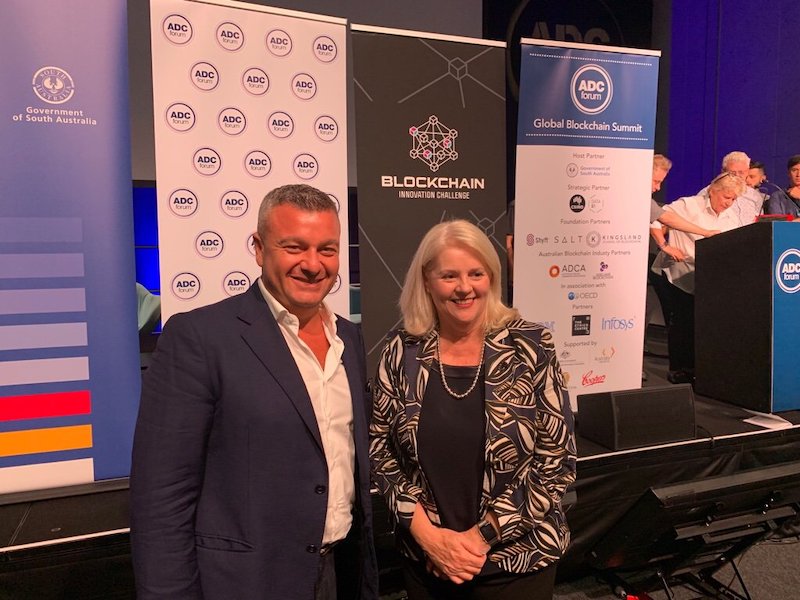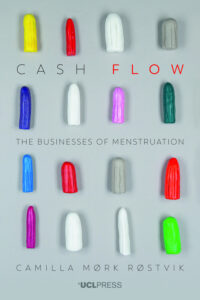For a time, all your label’s releases shared a general visual template. It created a uniformity. That classic Sacred Bones triangle and ouroboros haven’t been on as many of your artists’ album covers lately. Can you talk about how that reflects a shift in creative philosophies among you and your artists?
The classic Sacred Bones template was really important to the label in the very beginning. I still think it’s incredibly effective, and I always encourage people to use it, especially when it’s a new signing, because it signals to people that this is something to pay attention to, and that was the whole point when starting the label.
Creating this template came from working at record stores for many years and seeing how well that kind of thing works. When you walk into a store and you see a record on the wall, on impulse, you’re like, … “Oh, I don’t know that one. I’ll check it out,” and that was the thinking behind the template. But it got to the point where many of our artists don’t need that anymore and can stand on their own. It’s now more of a choice than something we enforce.
When you talk about it as a choice, it makes me wonder, have you ever heard from artists that including the logo and branding helps them with the creative aspects of putting together the artwork?
I always try to encourage people to get creative with the template, to really try and make it part of the design. My favorites are the records that Institute designed with that in mind. Crystal Stilts did one that was really interesting. There’s a new Thou record coming out later this year that made the template part of the art. Those are the most successful versions of that idea.
As a label head, you’re collaborating with everybody else who works at the label, and you’re collaborating with the artists, and you’ve talked about only signing artists that you personally connect with so that you’re basically working with friends. How do you know someone will be such a good collaborator that they become family? How do you build trust and safety with them?
Just like any relationship, you can’t guarantee that things are going to go smoothly. Just like any relationship, if you treat it with love, kindness, and understanding, you can overcome some dark moments.
We’re happy to be involved as much as the artist wants to be, but we like to step aside and let their process happen. Our involvement comes after the fact. It’s really about trying to take this thing that has been created and plant it and see it grow, and that’s where there needs to be a lot of trust from the artist. They really need to trust us. Being honest and open, and all of the things that make any relationship work, are equally important in a relationship with an artist.
Some of what you said also made me think about the intersection between running a label as a business and as a creative endeavor. If you have any thoughts on that, I’d love to hear them.
It is a business, too. I mean, it has to be. We have a staff who pays their rent every month, and…it’s important that we make money, because we live in a capitalist society and everyone needs to do that. But I think that if we are doing our jobs right, both as a label and an artist making good art we are able to make money. After doing this for 15 years, I think we’ve created enough of a community and gained the trust of music listeners to be successful if we’re doing our job right.
You’ve previously said that most of the time, you do 50/50 splits with artists, and the goal is for artists to survive off their music without having other jobs. Can you talk about the value of being able to focus solely on one’s creative practice, both for you as a label head and for your musicians?
Being able to do art full-time gives you a level of confidence that maybe isn’t always the case when you’re still hustling and working a bunch of different jobs. I think that confidence is such a huge part of any success. If you believe that something is amazing, then it’s likely that everyone else will.
What does success mean to you?
Success is being happy with what you’ve done or what you’ve made. Any other definition doesn’t make sense to me. There’s so much weight on making money, and I don’t think that’s a form of success.
The biggest success for me is when we’re able to help an artist make a living. When an artist is able to make art full-time, to me, that’s success, for sure. That’s the goal, to help lift artists up and give them a platform to do what we believe they can do.
Your work puts you close to art all the time, but I suppose you could argue that running a label is not itself art, or maybe you could argue that it is. I’m wondering where you fall on this.
There are a lot of creative aspects [to running] a label. There’s the creative aspect of, what bands do you work with and how they interact with each other on an aesthetic level for the audience. I think there’s an art to that for sure. I think A&R is a real art. Marketing is an art. It’s a very creative process. It’s just a different form of creativity.
I’m curious how you balance your creative needs as a label head with the need to make money.
I have a lot of fun making merch, and all the branding stuff for the label is really fun for me, and that’s a big creative outlet for me personally. I really enjoy figuring out ways to make cool products for the records, interesting ways to present the music, and interesting events for bands to play. Things of that nature are creatively rewarding for me.
Do you have any guiding philosophies behind that, beyond just the ouroboros and the triangle and the branding?
It’s all about making sure that every little aspect of the finished record is good, really paying attention to the details, making sure the finish on the jacket itself is the right finish for the art, making sure the hype sticker looks good. All those things are really important.
Reissues are a big part of the Sacred Bones story, and the fact that your reissues are primarily from filmmakers like David Lynch, Jim Jarmusch, and John Carpenter—whom you could argue are an order of magnitude better-known than even the most prominent Sacred Bones musician—is interesting to me. I’m wondering how working with legends like these helps you refine or expand the creative practice of running the label.
Those experiences have been super important to the growth of the label. Just being associated with artists of that magnitude carries a lot of weight. When people are thinking about working with us, sometimes, they go like, “Wow, David Lynch works with them. They must be pretty good.” I do think it’s really opened some doors for us, and it’s just been a dream for me. These are people that I grew up admiring.
How have you applied the lessons you’ve learned from working alongside these established figures to working with smaller or newer artists, or even lesser-known veterans?
Oftentimes, working with a newer artist can be more difficult than working with a seasoned person who has just done it. The seasoned person has done it all, and they know how it goes, and they’re not really fussed about much. As long as it’s getting done, everything is good, whereas with a newer artist, you have to be much more patient, because this is all brand new to them. Every little thing is new. It’s like anything else. You’re learning something for the first time, so it’s scary. You don’t know if you’re making the right decisions. Once you’ve done it a bunch of times, it’s easier.
I would love to hear more about what it’s like to collaborate with somebody like Lynch or Jarmusch or John Carpenter with whom you can be very hands-off.
For the most part, those guys do the work, they turn it in, and they’re very collaborative on certain aspects. John is very open when it comes to artwork. For the most part, we handle all that stuff in-house and present him with options, and he’s usually quite easy. He’s mostly just interested in making the music, whereas someone like David Lynch really wants to have his touch on everything. He does it all, and we’re there just to support and help him out in whatever way we can. With Sqürl and the Jarmusch projects, it’s somewhere in between. He’s super collaborative. There’s a new record in the works, and we’ve been suggesting the collaborators and producers.
I feel like Sacred Bones is the only label that would put out an album by a baby still inside the womb. How does turning your love for music into a business you own and manage let you pursue unorthodox creative endeavors like that?
That is absolutely a direct benefit of having run a record label and created a platform where people can just experiment. Some things work, and some things don’t work, and it’s okay. It’s cool to be in a position where you can just take chances and let your collaborators run a little wild.
With musicians, if they put out an album people don’t like, it could end their career or at least slow down their momentum, but with a label, I suppose that’s not necessarily true.
Definitely, and I think about that a lot, and I feel really grateful. As a label, you can take chances and put out things that don’t hit the way that you want them to, and you get more chances to do that. It’s much harder for artists to do that. Especially with the press machine and all of that, it can be hard.
You have a cult audience, in a way. Do you find your audience discoursing about what you’re releasing in a way that people discourse about a musician’s latest album or latest single?
I don’t know. In my dreams, I suppose, sure. There are people who…have their Reddit chats or whatever talking about it, but I’m not sure. I don’t search that out. I hope that people are able to see the amount of effort and love that we put into running the record label and get as excited about it as we do. That’s the dream.
Caleb Braaten Recommend:
Go to the Movies! It’s increasingly harder and harder to spend two hours (or so) with no distractions. So, see a movie. Get a snack. Don’t look at your phone. It’s wonderful.
New Jack Swing. There’s a lot of 90s revivalists out there currently and I think they are reviving the wrong era. Okay so technically this is late 80’s – early 90’s… but it’s sounds so good right now. Listen to Bobby Brown’s “On Our Own” from the Ghostbusters II soundtrack.
Go visit the trees. They have a lot of wisdom to share.
Take a deep dive into something that isn’t your work.
Remember, it’s just a joke.
This post was originally published on The Creative Independent.











